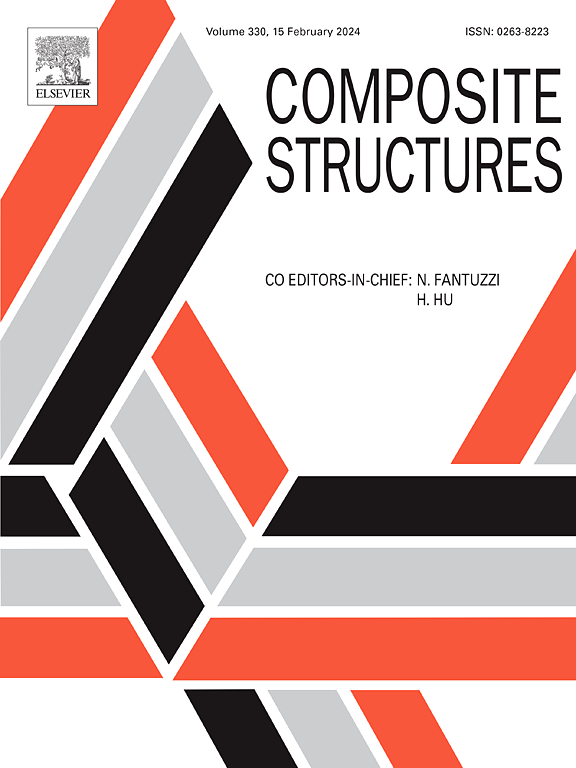Optimisation of large-Scale composite blade layup using coupled finite element method and machine learning
IF 6.3
2区 材料科学
Q1 MATERIALS SCIENCE, COMPOSITES
引用次数: 0
Abstract
This study focuses on the layup design of composite blades to enhance the mechanical properties of blades by adjusting the layup angle. The objective is to apply a generalised regression neural network (GRNN) to construct a surrogate model for multi-objective optimisation of composite blades. Four objectives are considered: the maximum displacement of the blade tip (to be minimised) and three metrics measuring the difference between the intrinsic frequency and the excitation frequency, called ‘resonance margin’ (to be maximised). Most of the lay-up angles of the composite blade are fixed and only two directions are considered as variables. Subsequently, the study incorporates the Non-dominated Sequential Genetic Algorithm II (NSGA-II) for multi-objective optimisation. The optimisation scheme achieves a dual enhancement of blade stiffness and resonance margin. After optimisation, the maximum displacement of the blade tip is reduced by about 32% compared with the pre-optimisation. The first three resonance margins are improved, especially the second order resonance margin is increased from 8.15% to 35.18%. The R value of the GRNN model of the blade is greater than 0.95. The high-precision surrogate model achieves accurate prediction of the mechanical properties of the blade. The trade-off of various properties of composite blades was achieved by NSGA-II algorithm.
基于有限元法和机器学习的大型复合叶片铺层优化
本文主要研究复合材料叶片的铺层设计,通过调整铺层角度来提高叶片的力学性能。目的是应用广义回归神经网络(GRNN)构建复合材料叶片多目标优化的代理模型。考虑了四个目标:叶尖的最大位移(最小化)和测量固有频率和激励频率之间差异的三个指标,称为“共振裕度”(最大化)。复合叶片的铺层角大多是固定的,只有两个方向是可变的。随后,本研究采用非支配序列遗传算法II (NSGA-II)进行多目标优化。优化方案实现了叶片刚度和共振裕度的双重增强。优化后的叶尖最大位移比优化前减小了约32%。前三级共振裕度有所提高,尤其是二级共振裕度由8.15%提高到35.18%。叶片GRNN模型的R2值大于0.95。高精度的代理模型实现了对叶片力学性能的准确预测。采用NSGA-II算法实现复合叶片各种性能的权衡。
本文章由计算机程序翻译,如有差异,请以英文原文为准。
求助全文
约1分钟内获得全文
求助全文
来源期刊

Composite Structures
工程技术-材料科学:复合
CiteScore
12.00
自引率
12.70%
发文量
1246
审稿时长
78 days
期刊介绍:
The past few decades have seen outstanding advances in the use of composite materials in structural applications. There can be little doubt that, within engineering circles, composites have revolutionised traditional design concepts and made possible an unparalleled range of new and exciting possibilities as viable materials for construction. Composite Structures, an International Journal, disseminates knowledge between users, manufacturers, designers and researchers involved in structures or structural components manufactured using composite materials.
The journal publishes papers which contribute to knowledge in the use of composite materials in engineering structures. Papers deal with design, research and development studies, experimental investigations, theoretical analysis and fabrication techniques relevant to the application of composites in load-bearing components for assemblies, ranging from individual components such as plates and shells to complete composite structures.
 求助内容:
求助内容: 应助结果提醒方式:
应助结果提醒方式:


